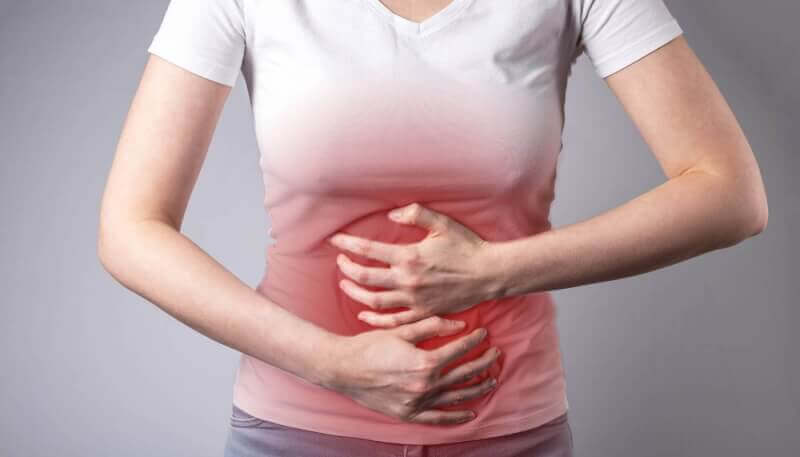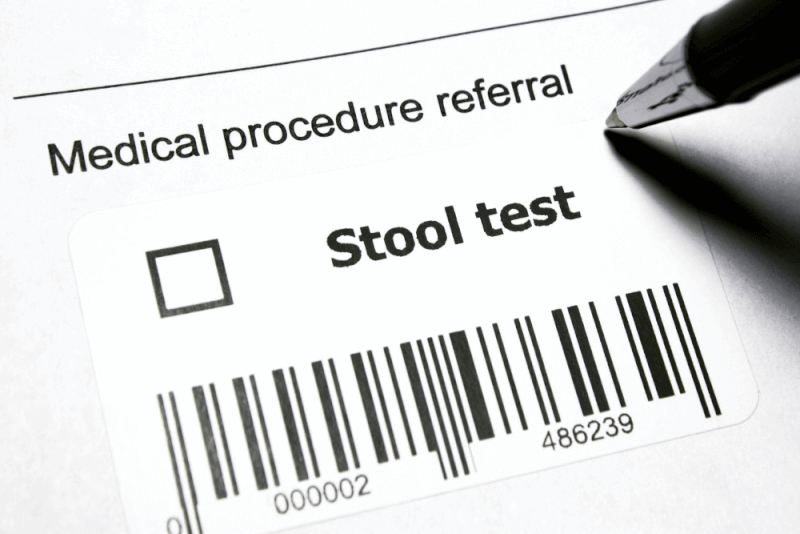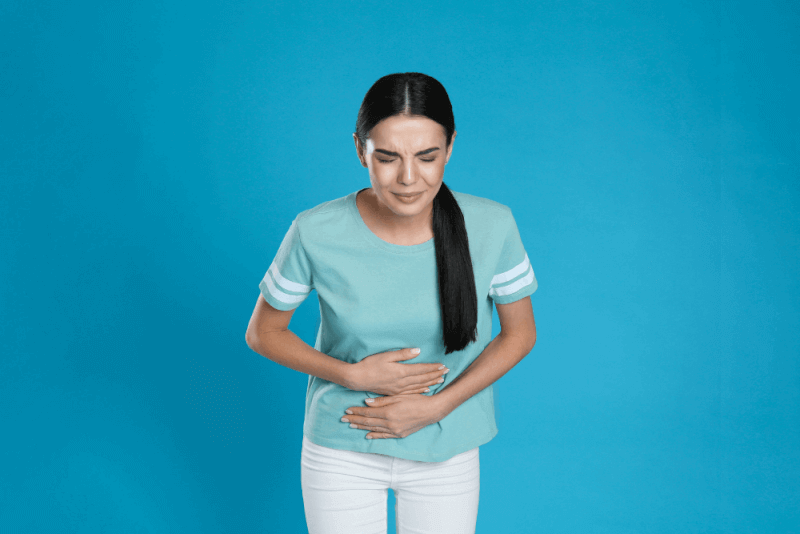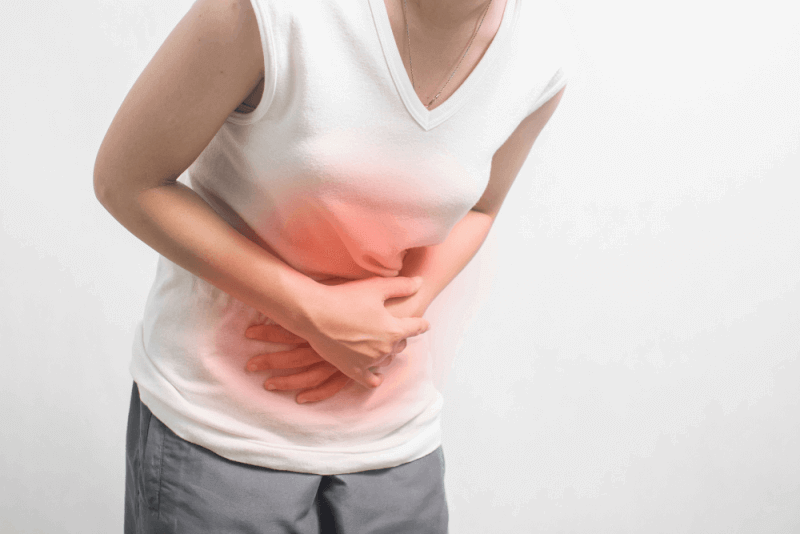30 Second Summary
- Acute gastritis occurs suddenly and causes symptoms such as severe abdominal pain, heartburn, nausea, vomiting, bloating.
- Chronic gastritis develops slowly and may be asymptomatic or cause mild symptoms.
- The most common cause of gastritis is the bacterium Helicobacter pylori (H. pylori).
- Other causes include alcohol, smoking, stress, certain medications and autoimmune diseases.
What is Gastritis?
Gastritis is a common term used to refer to inflammation of the stomach lining. The biggest cause of gastritis is the bacteria that cause stomach ulcers. This disease, called inflammation of the inner lining of the stomach, occurs as a result of both damage to the inner wall of the stomach and damage to the inner protective layer of the stomach. The contact of stomach acid with the mucous membrane in the stomach causes damage to these tissues.
Gastritis is divided into two types. The first of these is acute. Acute is a type that occurs suddenly. Another type of gastritis is chronic gastritis. This type of gastritis develops slowly and is almost asymptomatic.
Types of gastritis
Gastritis types are divided into 3 main headings. The duration of the disease, its location and whether it is corrosive or not play a role in determining these headings.
Types of gastritis according to disease duration
The first heading of gastritis types is classified according to the duration of the disease. This class includes acute and chronic gastritis.
Acute gastritis
Acute gastritis occurs suddenly and is temporary. The factors causing acute gastritis are also acute. In acute gastritis, it is noticed that the pain increases when the pain area is pressed by hand. Symptoms seen in patients with acute gastritis include the following:
- Back pain
- Heartburn
- Nausea
- Vomiting
- Blood in the stool or black stools
- Loss of appetite
- Vomiting with blood or coffee grounds
- Persistent belching
- Bloating
- Feeling of fullness in the abdomen
Chronic gastritis
The type of gastritis that persists for a long time is called chronic gastritis. Chronic gastritis does not cause any symptoms in a significant proportion of cases. This is because the disease develops slowly. If chronic gastritis is left untreated, duodenal or stomach ulcers can occur. In symptomatic patients, the following symptoms are observed.
- Bloating
- Feeling of fullness
- Burping
Chronic gastritis is divided into different types.
Autoimmune
Autoimmune gastritis, also called type A gastritis, occurs when cells of the immune system attack the gastric mucosa.
Bacterial
Bacterial gastritis, also called type B gastritis, is caused by bacteria that settle in the stomach. Helicobacter Pylori is found in a significant number of cases.
Type C
Type C gastritis, which occurs due to irritation of the stomach by chemical or toxic substances, is a type of gastritis usually seen in people who take medication for a long time. Non-drug triggers of type c gastritis include the following:
- Alcohol consumption
- Biliary reflux
Types of gastritis by location
Gastritis also varies according to the location of the irritation caused by gastritis in the stomach. Among the types of gastritis according to location are the following:
- Antral gastritis
- Pangastritis
- Corpus gastritis
Antral gastritis
Antral gastritis is the name given to gastritis seen in the outlet part of the stomach. 80% of gastritis cases are in this group. At the same time, antral gastritis has the characteristics of chronic gastritis and is usually of bacterial origin.
Pangastritis
The type of pangastritis seen in cases of chronic gastritis, which usually occurs after acute gastritis, is a type of gastritis seen in all parts of the stomach lining. Pangastritis, also defined as inflammation of the entire stomach lining, has a different structure than normal gastritis. Symptoms include the following:
- Bloating occurs even after eating very little food.
- Digestive problems
- Pain in the stomach
- Loss of appetite
- Heartburn after a meal
- Abdominal pain after a meal
- Bloody stool
Corpus gastritis
Gastritis located in the dome-shaped upper part of the stomach is called corpus gastritis. Since the cells responsible for secreting gastric acid are located in the affected area, there is a decrease in gastric acidity in these patients. Corpus gastritis is usually asymptomatic. However, the most common complaints in patients with symptoms include the following:
- Discomfort in the upper abdomen
- Early satiety
- Feeling of fullness and indigestion after meals
- Loss of appetite
- Weight loss
Types of gastritis according to its erosiveness
Another factor influencing the variety of gastritis is whether it is erosive or not. This heading is also divided into three.
Erosive gastritis
If the cause of gastritis causes erosion of the stomach lining, it is defined as erosive gastritis. Among these corrosive causes are the following:
- Acid
- Bile
- Alcohol
- Drugs
Non-erosive gastritis
It is a type of gastritis seen due to factors that do not cause erosion of the stomach lining. In non-erosive gastritis, the stomach lining is irritated but not eroded. However, atrophic gastritis, which is a type of non-corrosive gastritis, causes digestive problems by reacting with thinning or depletion of the stomach lining.
Cases of gastritis may have features that can be included in several groups at the same time. In addition, some cases of gastritis are referred to by a specific name. These include the following:
- Infectious gastritis
- Stress-induced gastritis
- Alcohol-induced gastritis
- Drug-induced gastritis
What are the Symptoms of Gastritis?
Symptoms of gastritis appear in different ways depending on the type of gastritis. It can also progress without any symptoms in some patients.
Symptoms of Acute Gastritis
The characteristic symptom of acute gastritis is abdominal pain that occurs suddenly. In addition, when pressure is applied to the painful area, the pain increases. Other symptoms of acute gastritis are as follows:
- Heartburn
- Blood in the stool or black stools,
- Vomiting of ground-up or bloody vomit,
- Bloating
- A feeling of fullness in the abdomen,
- Continuous belching,
- Loss of appetite
- Nausea
- Vomiting
- Back pain
Symptoms of Chronic Gastritis
Since chronic gastritis progresses slowly, the majority of patients do not show any symptoms. Symptoms seen in some chronic gastritis patients are as follows:
- A feeling of fullness in the stomach,
- Burping,
- Bloating
However, if chronic gastritis is left untreated for a long period of time, it can cause other problems and the symptoms will be related to these problems. Chronic gastritis left untreated for a long time predisposes to duodenal ulcer, gastric ulcer and gastric cancer.
Symptoms of nervous gastritis
Nervous gastritis occurs when people experience sadness or stress due to something. Symptoms of nervous gastritis that occur during or immediately after periods of distress include the following:
- Blood in the stool
- Pain in the upper abdomen
- Weight loss due to loss of appetite
- Pain in the lower part of the ribs
- Loss of appetite
- Heartburn
- Vomiting
- Nausea
What are Gastritis Tests? (Diagnosis)
In order to diagnose gastritis, a detailed information is first obtained from the patients. These details include previous illnesses, medications, alcohol or cigarette use and eating habits.
Patients then undergo a physical examination to establish the diagnosis. Physical examination is performed to determine whether patients have pain that increases when touched.
Tests are also used to make a precise diagnosis. The most commonly used test for diagnosis is ultrasound imaging of the upper abdomen. If a perforation of the stomach is suspected, an X-ray of the upper abdomen is also performed. Endoscopy is used to make a definitive diagnosis of gastritis. If the doctor deems it necessary, tissue samples can also be taken from the stomach during endoscopy.
Blood and stool tests can also be performed to diagnose and describe gastritis in detail. Blood tests determine which pathogens are present in the body. Blood tests are also needed to diagnose autoimmune gastritis. Stool tests are done to see if bleeding has occurred.
Causes of gastritis
Gastritis is basically the immune system's response to an event in the stomach. Immune cells go to the stomach to correct a problem in the stomach and repair the cells. However, the factors that cause this problem may vary.
Infections
When it comes to acute gastritis, infection is the most common cause. Bacterial and viral infections associated with stomach flu can cause a reaction in the stomach within a short period of time. The most common cause of gastritis caused by infection is H.plori bacteria. Fungal and parasitic infections are rare.
Chemicals
Chemicals, especially alcohol and some medicines, are also one of the causes of gastritis. The duration of use of these agents affects whether gastritis is acute or chronic. Chemical causes can also cause erosive gastritis. In particular, overuse of NSAIDs such as aspirin and ibuprofen are among the most common causes of acute gastritis. In addition to these, drug use is one of the chemical causes of gastritis.
Autoimmune diseases
In autoimmune diseases, immune cells attack healthy body tissues. When immune cells attack the stomach lining, chronic gastritis develops slowly. Although rare, gastritis can also be seen as a side effect of some autoimmune diseases.
Reduced blood volume
When the amount of blood in the body decreases due to trauma or major surgery, the body diverts blood flow from the stomach to vital organs in order to sustain life. This leaves the stomach lining vulnerable and more susceptible to the chemicals in the stomach.
Other causes
Other factors that cause gastritis include the following.
- Radiation therapy
- Chemotherapy
- Bile reflux
Gastritis Treatment Methods
Gastritis is primarily treated with lifestyle changes, just like reflux treatment. Usually, appropriate changes in eating habits and lifestyle are sufficient to treat gastritis. However, if these are not sufficient, medication can be used.
The first step in the treatment of gastritis is always to avoid factors that disturb the inner wall of the stomach. For this, especially smoking, coffee and alcohol should be avoided.
In cases of very severe pain, patients should not eat for a day or two. Especially during periods of exacerbation of gastritis, appetite naturally decreases.
Patients are advised to consume light foods during periods of mild symptoms. It is also recommended that meals should be small and frequent during these periods.
Gastritis attacks are also triggered by stress. In these cases, patients may benefit from meditation and relaxation exercises to help them manage their stress.
If eating habits or lifestyle changes do not work in the treatment of gastritis, medication is used. Antacids, proton pump inhibitors, H2 receptor blockers and antibiotics are among the drug groups used to treat gastritis. The use of antibiotics in drug treatment is due to the presence of bacteria in the stomach. If no bacteria are found in the tests, then there is no need to use antibiotics. On the other hand, vitamin B12 is often used in the treatment of autoimmune gastritis.
Gastritis Diet
The most important step in the treatment of gastritis is to follow the right diet. In particular, foods that help destroy Helicobacter pylori bacteria should be consumed. For this, homemade probiotic foods should be added to the diet. Among these foods, yogurt and sauerkraut come first. In addition, garlic, which is a natural antibiotic in the destruction of this bacteria, and broccoli is one of the important foods due to its ingredients. These include apple cider vinegar, ginger, turmeric, pineapple, thyme, cranberry juice, green tea, beet juice and carrot juice. In addition to eliminating bacteria, these foods also help relieve symptoms such as nausea, stomach pain, bloating and heartburn.
Among the foods that help treat gastritis are the following:
- Fresh vegetables and fruits,
- Foods rich in fiber,
- Whole grains
- Coconut oil,
- Low-fat meats
- Homemade probiotic foods
On the other hand, there are factors that can trigger gastritis. Not consuming these foods is important in the treatment process. The triggering factors are the following:
- Coffee,
- Chocolate
- Cigarette,
- Processed food,
- Acidic foods like tomatoes,
- Roasts
- Foods high in fat,
- Foods high in sugar,
- Artificial sweeteners,
- Excessive use of spices,
- Frozen foods.
Gastritis Surgery
Before considering gastritis surgery as a solution for the treatment of patients with gastritis, dietary changes and medication use should not have responded. On the other hand, gastritis gastric surgery should be performed in advanced cases and gastric bleeding. In gastritis stomach surgeries, the damaged stomach wall is removed.
Summary of Surgery
Duration of Surgery 1-3 hours
Anesthesia Method: General
Hospitalization Duration: 2-7 Days
Return to Work Period: 2-6 Weeks
Complications of gastritis
Gastritis is usually temporary and does not cause serious health problems. However, in cases where gastritis persists for a long time, there is damage to the stomach lining. This leads to various complications.
Ulcer
If erosive gastritis is left untreated, the disease exhibits progressive features. This leads to the development of ulcers. Gastrointestinal bleeding occurs in the presence of a stomach ulcer. These bleedings cause anemia in the long term.
In addition, scar tissue caused by ulcers may also block the stomach outlet. If the ulcer is not treated, the wound deepens and causes perforation of the stomach wall. This causes the bacteria in the stomach to pass into the abdominal cavity. The passage of bacteria into the abdominal cavity leads to infection and, naturally, to other complications such as peritonitis, septicemia and sepsis.
Atrophy and metaplasia
Complications caused by non-erosive gastritis occur slowly. For this reason, it can cause the stomach lining to shrink and lose its function over the years. If the stomach lining loses its function, the absorption of vitamins such as iron, folic acid and B12 is impaired. This problem leads to anemia.
In addition, although rare, in the long term, cells in the lining of the stomach can mutate and evolve in such a way that they present themselves as another tissue. This condition is called gastrointestinal metaplasia. Metaplasia is often considered a precursor symptom of cancer. For this reason, there are opinions that the risk of stomach cancer increases.
Gastritis attack
Gastritis attack occurs in acute gastritis. Sudden onset of symptoms can cause patients to struggle. These symptoms include the following:
- Feeling severe pain in the upper left corner of the abdomen
- Burning or scraping sensation in the stomach that cannot be pinpointed (in ulcer patients, the site of burning or pain can be pinpointed)
- Severe pain in the back
- Nausea
- Vomiting
- Loss of appetite
How do you recognize gastritis pain?
The stomach is located in the upper left part of the abdomen under the ribs. Pain caused by inflammation of the stomach lining due to inflammation is also felt in this area. Although pain is generally felt in the upper left region of the abdomen, it is not always possible to pinpoint the exact location of gastritis pain. If you can pinpoint the location of the pain, then an ulcer should be suspected. The pain caused by gastritis is a burning and abrasive pain. Gastritis pain is especially worse after eating.
Gastritis in Children
Approximately half of children under 10 years of age have Helicobacter pylori gastritis, a bacterium that is transmitted from person to person. The most prominent symptom is prolonged abdominal pain. If left untreated, it causes ulcers.










